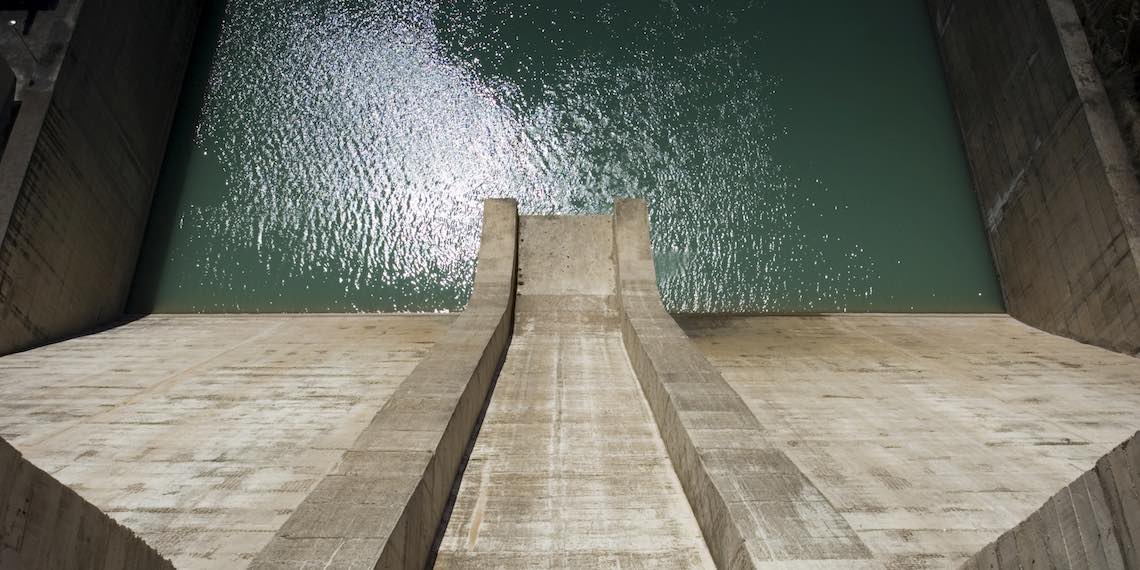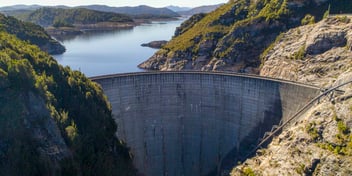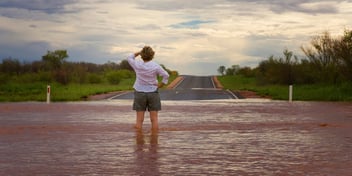Rethinking dams for a climate resilient future

As Australia’s east coast communities continue to struggle through relentless rainfall and flooding, one leading expert says it’s time to consider how dams can better serve flood mitigation efforts and meet the challenges of more severe weather events in future.
GHD Australian Dams Leader Steve Fox said the escalating impact of the 2022 flooding events across Australia demands careful consideration of whether dam infrastructure and its operation are appropriate for the anticipated stresses of climate change.
“Australians are often surprised to learn that, since most of our dams are primarily intended for water storage, they currently can’t play an effective role in mitigating floods,” he said.
“The reality is most of Australia’s dams were built over 50 years ago and they are still operating to rules set at that time. For example, they typically cannot meaningfully lower dam levels before forecast rain events, in case there’s another drought around the corner.
“Our dams were designed and built for water storage within a different climate. But our climate has changed and will continue to change.”
Fox said it may be time to rethink the opportunities dams present in response to calls from the community to use existing infrastructure to protect flood-vulnerable areas where they have available capacity to do so.
“Could we repurpose these dams to still do what they have always done and provide water for various entitlement holders, but also improve their ability to protect communities downstream from the impacts of flooding?” he said.
“In many cases, I think the answer is yes.”
Changing climate
The increasing impacts of climate change, along with advances in weather forecasting and modelling, offers the opportunity to reconsider dam operation to help mitigate impacts on communities, Fox said.
“Two things should challenge our thinking. First, climate change; every degree of global warming translates to around seven per cent more water in the atmosphere, so our dams need to be prepared for more rain,” he said.
“What we’re seeing now is what a 1°C rise in temperatures brings, but realistically we’re likely to go to between 1.5° and 3.0°C, despite current efforts to limit the rise.
“Second, we now have much better climate forecasting. We know whether we’re going into a La Niña or El Niño weather pattern, so why wouldn’t we adjust our dam-operating rules to suit?”
Fox said that while all large dams provide some flood mitigation, operators are under obligation to operate the dam in a certain way.
“And they are really good at doing that. However, operators are quite limited in their ability to change how they operate the dams because of the dam’s primary purpose,” he said.
“But it certainly would be possible to reconfigure some of our dams so that they can still do what they have always done, but give operators the ability to mitigate floods more than they currently can, which would help protect communities as the climate changes.”
Australia is always going to experience drought and flood, Fox said, and while it’s not possible to fully drought or flood-proof communities, more can be done to help mitigate the damaging effects of both extremes.
“Our dams can help us here in both ways. Increasing the storage capacity won’t drought proof our regions or flood proof downstream communities, but it will buy time and reduce the impact,” he said.
Time to adapt
GHD’s recent Aquanomics report details the economic impacts of extreme weather events, predicting floods are expected to cost the Australian economy $312 billion between 2022 and 2050.
“It’s a real wake up call. We are in the infrastructure business and we’ve got to consider our infrastructure in a new light,” Fox said.
“And one of the key messages from the report is that we have to adapt. But what does adaptation mean? Adaptation isn’t about getting used to it, it's about looking at all of our assets and how we might reconfigure them for climate change.
“All of our water assets are quite vulnerable and we need to look at what needs to change so that they can help communities adapt.”
Fox said a much broader conversation needs to occur that considers how we want our assets to function in the future.
“We’ve all heard about climate change for a long time, but we are now seeing the impacts of it and starting to understand those impacts better, which will help us think through what some of the adaptations might be,” he said.
“It’s really important that the dams are safe and operated well, but let's look to the future. Where do we go from here? Is dam operation something that the community is satisfied with, or do we need to do more?”
Fox said communities get very vocal about dams when there are floods — they want to know why more can’t be done with the dams to help mitigate flooding.
“This happens every time we experience major flooding. It might be time to listen properly and consider what we can do to meet community expectations,” he said.
Exploring challenges
While a rethink is needed, Fox said adding meaningful flood mitigation to existing dams won’t be easy to do, which is why it’s important to start now.
“Adding meaningful flood mitigation to existing dams is expensive and it takes time. Any reconfiguring or adding of extra functionality isn’t a small exercise,” he said.
“It will have some really positive impacts on flood mitigation, but it will also potentially affect people upstream and the environment, too. It’s the sort of thing that we need to progress in a thoughtful way.
“It’s all about trade offs, and we need to understand what those trade offs are.”
Fox said rethinking how we purpose our dams will require studies in river system management, setting specific planning and operating rules, understanding environmental trade-offs and ensuring communities are genuinely part of that planning.
“Nevertheless, given what’s at the stake, the sooner we start contemplating and exploring these challenges the better,” he said.


